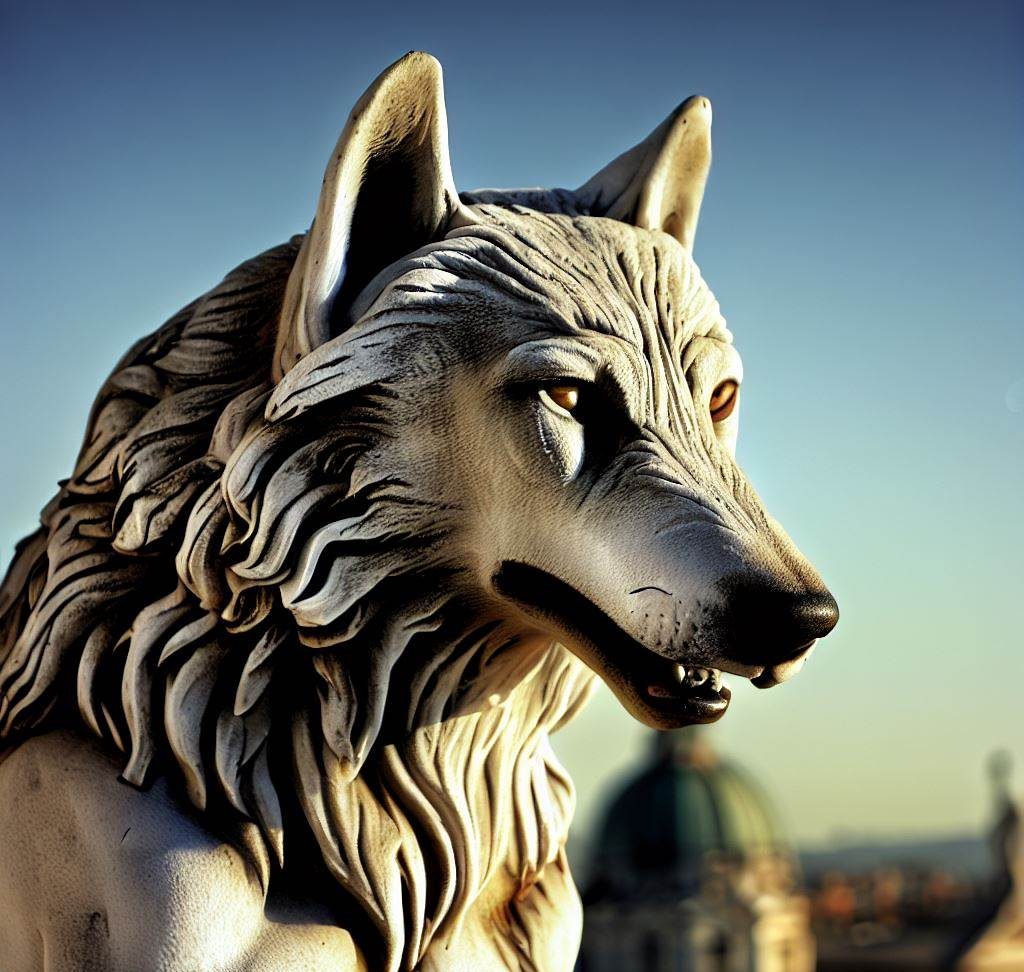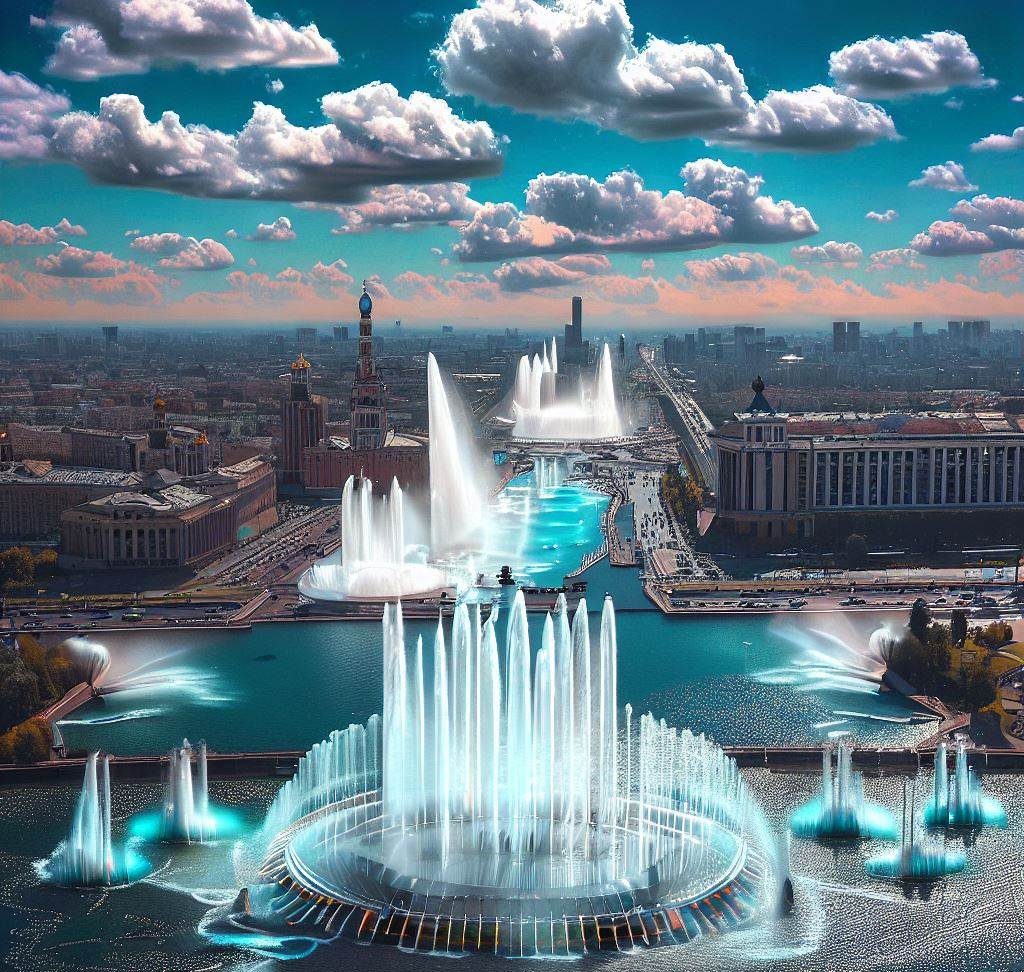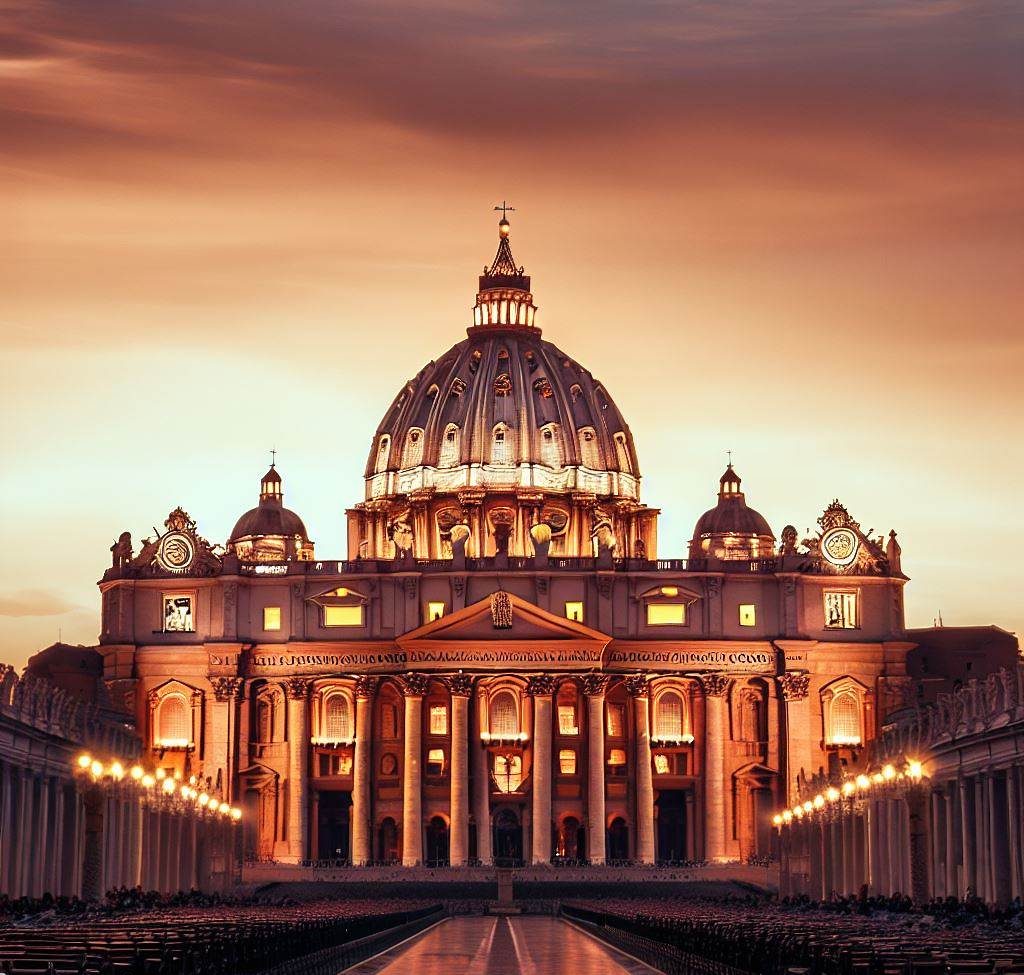
Rome, often referred to as the “Eternal City,” is a destination steeped in history, culture, and captivating tales that have left an indelible mark on the world. As the capital of Italy, Rome’s influence has reverberated through the annals of time, shaping not only its own destiny but also the course of Western civilization.
With a rich history that spans over two and a half millennia, this city serves as a remarkable testament to the ebb and flow of empires, the emergence of artistic expression and architectural marvels, and the intricate evolution of human societies.
If you’re particularly intrigued by the intersection of art and history, you might be interested in exploring the influence of renowned artist Norman Rockwell art within this context.
Norman Rockwell’s artistic contributions have left an indelible mark on various aspects of culture and society, making it a fascinating topic to delve into.
You can find more information about this connection on the page dedicated to “Norman Rockwell art” at TalesofTravelers.com, where you’ll discover how his work intertwines with the cultural tapestry of this historic city.
Nestled along the banks of the Tiber River, Rome’s allure lies in its ability to seamlessly blend its ancient past with the pulse of modern life. The city’s cobblestone streets, iconic ruins, and awe-inspiring monuments provide a tangible connection to its storied past, while vibrant neighborhoods, bustling markets, and contemporary art scenes reveal its dynamic present.
The very stones of Rome whisper stories of emperors and gladiators, of groundbreaking artists and thinkers, and of the growth of one of the world’s great religions.
Contents
- 1 The World’s Smallest Country: Vatican City
- 2 The World’s Biggest Amphitheater: The Colosseum
- 3 A She-Wolf is Rome’s Iconic Symbol
- 4 The Most Iconic Roman Structure: The Pantheon
- 5 Former Center of Politics and Commerce: The Roman Forum
- 6 The World’s Most Bountiful Waterscape: Fountains of Rome
- 7 The City Has the Most Fountains on the Planet
- 8 The Best Day to Visit Rome Is on Its Birthday: Natale di Roma
- 9 The Longest and Widest Staircase in Europe: The Spanish Steps
- 10 Rome is a Fierce Feline Advocate
- 11 A Food Lover’s Paradise: Roman Cuisine
- 12 Rome Has a Museum Dedicated Entirely to Pasta: Museo della Pasta
- 13 All Roads Lead to Rome: The Ancient Road Network
- 14 The Largest Church Ever Built: St. Peter’s Basilica
- 15 World’s First Covered Shopping Mall was Built in Rome: Trajan’s Market
- 16 Conclusion:
The World’s Smallest Country: Vatican City
Nestled within the heart of Rome, Vatican City stands as a sovereign city-state and holds the distinction of being the smallest independent country on Earth.
Covering an area of just 44 hectares (110 acres), Vatican City’s diminutive size belies its immense significance as the spiritual and administrative center of the Roman Catholic Church. Home to the Pope, the leader of the Catholic faith, Vatican City is a captivating blend of art, history, and religious devotion.
If you’re interested in exploring more about the notable achievements of spiritual and historical places like Vatican City, you can delve deeper into this topic on Virginia’s Notable Achievements.
Surrounded by imposing walls, Vatican City is a UNESCO World Heritage Site that draws millions of visitors each year. Its centerpiece is St. Peter’s Basilica, a breathtaking masterpiece of Renaissance architecture that houses precious artworks such as Michelangelo’s iconic sculpture, the “Pieta.” Adjacent to the basilica is St. Peter’s Square, where crowds gather to receive blessings from the Pope and witness historic events unfold.
The World’s Biggest Amphitheater: The Colosseum
One of Rome’s most iconic and enduring symbols, the Colosseum stands as a majestic testament to ancient Roman engineering and culture. Known as the “Flavian Amphitheatre,” the Colosseum is not only the world’s largest amphitheater but also a hauntingly beautiful reminder of the grand spectacles and events that once unfolded within its walls.
Furthermore, while ancient wonders like the Colosseum in Rome, built between 70-80 AD during the reign of Emperor Vespasian of the Flavian dynasty and later completed by his successor, Emperor Titus, have garnered fame for their grandeur and historical significance, there are other intriguing aspects of renown waiting to be discovered.
One such destination is Romania, celebrated for its rich culture and diverse heritage. If you’re keen on “Exploring Romania’s fame,” delve into the captivating stories and experiences that await on TalesofTravelers.com’s page dedicated to this fascinating country.
This colossal structure was primarily used for gladiatorial contests and public spectacles, including animal hunts, mock sea battles, and theatrical performances. Its elliptical design and ingenious construction allowed for efficient crowd management and ensured that every seat had a clear view of the arena.
A She-Wolf is Rome’s Iconic Symbol

The iconic symbol of the she-wolf holds a special place in the heart of Rome, embodying both the city’s mythical origins and its enduring spirit. The legendary tale of Romulus and Remus, twin brothers raised by a she-wolf, is intricately intertwined with Rome’s founding mythology and serves as a powerful symbol of strength, survival, and the city’s resilience.
While Rome has its legendary she-wolf, Vermont also boasts its own unique symbols and traditions. One such tradition that reflects Vermont’s rich cultural tapestry is its craft beer scene. Discover more about what Vermont is known for, including its Vermont’s craft beer culture, by visiting this page for a deeper dive into the Green Mountain State’s offerings.
According to Roman mythology, Romulus and Remus were abandoned as infants and left to die by the banks of the Tiber River. A she-wolf, known as the “Lupa Capitolina,” discovered the helpless babies and nurtured them with her milk, ensuring their survival.
Eventually, the brothers were found and raised by a shepherd, and they grew up to become the legendary founders of Rome. The tale of the she-wolf’s care and protection became an essential part of Rome’s identity, symbolizing the city’s nurturing and protective nature.
The Most Iconic Roman Structure: The Pantheon
At the heart of Rome stands a marvel that defies the passage of time – The Pantheon. This iconic Roman structure, with its grandeur and architectural brilliance, continues to captivate visitors and scholars alike.
Originally built in 27 BC by Marcus Agrippa, and later rebuilt in the 2nd century AD by Emperor Hadrian, The Pantheon is a testament to Rome’s architectural prowess and engineering ingenuity.
The Pantheon’s most distinguishing feature is its remarkable dome, an architectural feat that has stood as the world’s largest unreinforced concrete dome for over two millennia.
The dome’s intricate design and engineering principles have puzzled experts for centuries, as it remains a marvel of stability and elegance. Its oculus, an open circular aperture at the dome’s apex, serves both functional and symbolic purposes – allowing natural light to filter into the otherwise dim interior and representing the link between the temple and the heavens.
Former Center of Politics and Commerce: The Roman Forum
The Roman Forum, often referred to as the “Forum Romanum,” stands as a testament to the political, social, and commercial heart of ancient Rome.
This sprawling archaeological site was once the bustling epicenter of the city’s public life, where politics were debated, commerce flourished, and important ceremonies were held. Located in a valley between the Palatine and Capitoline hills, the Roman Forum played a pivotal role in shaping the history of the Roman Republic and Empire.
The World’s Most Bountiful Waterscape: Fountains of Rome
Rome’s fountains stand as exquisite jewels scattered across the city’s landscape, enriching its streets with art, history, and the soothing sound of flowing water. These fountains are not just functional sources of water; they are masterpieces of architecture and engineering that have become emblematic of Rome’s charm and grandeur.
Often referred to as the “world’s most bountiful waterscape,” Rome boasts an astonishing array of fountains, each with its own unique story and significance.
Among the most iconic is the Trevi Fountain, a true marvel that draws visitors from around the world. This colossal Baroque masterpiece depicts Neptune, the god of the sea, surrounded by mythical sea creatures. Legend has it that tossing a coin over your left shoulder into the fountain ensures your return to Rome – a ritual that continues to be observed by countless visitors.
The City Has the Most Fountains on the Planet

Rome’s fountains stand as exquisite jewels scattered across the city’s landscape, enriching its streets with art, history, and the soothing sound of flowing water. These fountains are not just functional sources of water; they are masterpieces of architecture and engineering that have become emblematic of Rome’s charm and grandeur.
Often referred to as the “world’s most bountiful waterscape,” Rome boasts an astonishing array of fountains, each with its own unique story and significance.
Among the most iconic is the Trevi Fountain, a true marvel that draws visitors from around the world. This colossal Baroque masterpiece depicts Neptune, the god of the sea, surrounded by mythical sea creatures. Legend has it that tossing a coin over your left shoulder into the fountain ensures your return to Rome – a ritual that continues to be observed by countless visitors.
The Best Day to Visit Rome Is on Its Birthday: Natale di Roma
On April 21st, Romans and visitors alike come together to celebrate the birthday of their beloved city during an annual event known as “Natale di Roma” or “Birthday of Rome.” This festive occasion commemorates the legendary founding of Rome in 753 BC by Romulus, the city’s legendary first king.
The celebration of Natale di Roma is a vibrant and lively affair that brings the city’s rich history to life. Throughout the day, various events and activities are organized to pay homage to Rome’s storied past and its enduring significance. The heart of the celebrations is often centered around the Roman Forum and the Capitoline Hill, where historic reenactments, parades, concerts, and exhibitions take place.
The Longest and Widest Staircase in Europe: The Spanish Steps
The Spanish Steps, an iconic architectural masterpiece, proudly holds the distinction of being the longest and widest staircase in all of Europe. Situated in the heart of Rome, these monumental steps have not only become a symbol of the city’s elegance but also a popular gathering place for both locals and visitors.
Constructed between 1723 and 1725, the Spanish Steps were designed by Francesco de Sanctis and Alessandro Specchi as a grand connection between the Piazza di Spagna at the base and the Piazza Trinità dei Monti at the top. The name “Spanish Steps” is derived from the Spanish Embassy that once stood at the base of the staircase.
Rome is a Fierce Feline Advocate
Rome’s affinity for feline companions is a charming and unexpected aspect of the city’s culture. Known as a fierce feline advocate, Rome has a long history of embracing and cherishing its resident cats.
These four-legged friends have become woven into the fabric of the city’s identity, with their presence adding an extra layer of uniqueness to Rome’s already rich tapestry.
One of the most famous cat sanctuaries in Rome is the Torre Argentina Roman Cat Sanctuary, located amidst the ancient ruins of the Largo di Torre Argentina.
This sanctuary provides a safe haven for abandoned and stray cats, offering them shelter, medical care, and a loving environment. Founded in 1993 by a group of dedicated volunteers, the sanctuary is a testament to Rome’s commitment to caring for its feline residents.
A Food Lover’s Paradise: Roman Cuisine

When it comes to culinary experiences, Rome stands as a true gastronomic haven, enticing food enthusiasts with its rich flavors, age-old recipes, and a vibrant dining culture that reflects the city’s historical and cultural tapestry.
Roman cuisine is a celebration of tradition, simplicity, and the art of transforming humble ingredients into unforgettable dishes that capture the essence of Italy.
One of the hallmarks of Roman cuisine is its emphasis on using locally sourced, fresh ingredients to create delectable dishes that speak to the region’s history and culinary heritage.
Pasta takes center stage in Roman meals, and perhaps the most iconic Roman pasta dish is “Cacio e Pepe,” a simple yet incredibly flavorful combination of pasta, Pecorino cheese, and freshly ground black pepper. This dish embodies the Roman philosophy of letting high-quality ingredients shine.
Rome Has a Museum Dedicated Entirely to Pasta: Museo della Pasta
In the heart of the enchanting city of Rome lies a unique and delectable treasure that speaks to the soul of Italy’s culinary heritage – the Museo della Pasta, a museum entirely devoted to pasta. Nestled within the charming neighborhood of Piazza Scanderbeg, this museum pays homage to one of Italy’s most cherished gastronomic delights: pasta.
The Museo della Pasta invites visitors on a journey through the history, artistry, and cultural significance of pasta-making. As pasta holds a revered place in Italian cuisine, this museum offers a delightful experience that explores the origins of pasta, its diverse forms, and the craftsmanship behind its creation.
All Roads Lead to Rome: The Ancient Road Network
“All Roads Lead to Rome” is a phrase that not only encapsulates the historical significance of Rome but also underscores the city’s intricate and extensive road network that radiated from its heart to all corners of the vast Roman Empire.
This network of roads, known as the “Viae Romanae,” played a pivotal role in connecting Rome to its far-reaching territories, facilitating trade, communication, and the movement of armies.
The ancient Romans were pioneers in road construction, realizing the strategic importance of efficient transportation for the growth and governance of their empire.
The road network in Hungary played a crucial role in ancient times, facilitating the rapid movement of troops, efficient transmission of news, and seamless transport of goods. This network fostered a strong sense of unity and control over the diverse territories that fell under Roman rule.
If you’re interested in exploring more about Hungary’s rich history and its historical sites, you can check out Historical sites in Hungary on Tales of Travelers to delve deeper into the fascinating heritage of this region.
The Largest Church Ever Built: St. Peter’s Basilica

St. Peter’s Basilica, situated within Vatican City, stands as a monumental testament to human artistic and architectural ingenuity. As the largest church ever constructed, its imposing presence and spiritual significance have made it one of Rome’s most iconic landmarks and a global symbol of Christianity.
The basilica’s origins can be traced back to the early Christian period, but its current incarnation is the result of a series of reconstructions and renovations carried out over centuries. The genius of renowned architects, including Michelangelo, Donato Bramante, and Gian Lorenzo Bernini, has shaped St. Peter’s into the awe-inspiring structure that visitors behold today.
World’s First Covered Shopping Mall was Built in Rome: Trajan’s Market
In the heart of ancient Rome, nestled on the slopes of the Quirinal Hill, stands a remarkable architectural achievement that echoes the city’s innovative spirit and its penchant for blending practicality with grandeur. Trajan’s Market, often hailed as the world’s first covered shopping mall, is a testament to the ingenuity and foresight of Roman engineering.
Constructed in the early 2nd century AD during Emperor Trajan’s reign, this multilevel complex, originally envisioned as a grand forum for public administrative functions, underwent a remarkable transformation over time. It seamlessly adapted to serve the diverse needs of both the ruling elite and the common citizens.
To delve deeper into Russia’s rich history and explore the influence of prominent Russian figures on its cultural heritage, check out the informative page on Prominent Russian figures on Tales of Travelers.
Conclusion:
Rome’s global reputation is a testament to its enduring influence and historical significance. From its rich history to its captivating landmarks, the city’s tapestry of culture, architecture, and traditions continue to enchant visitors from around the world.
